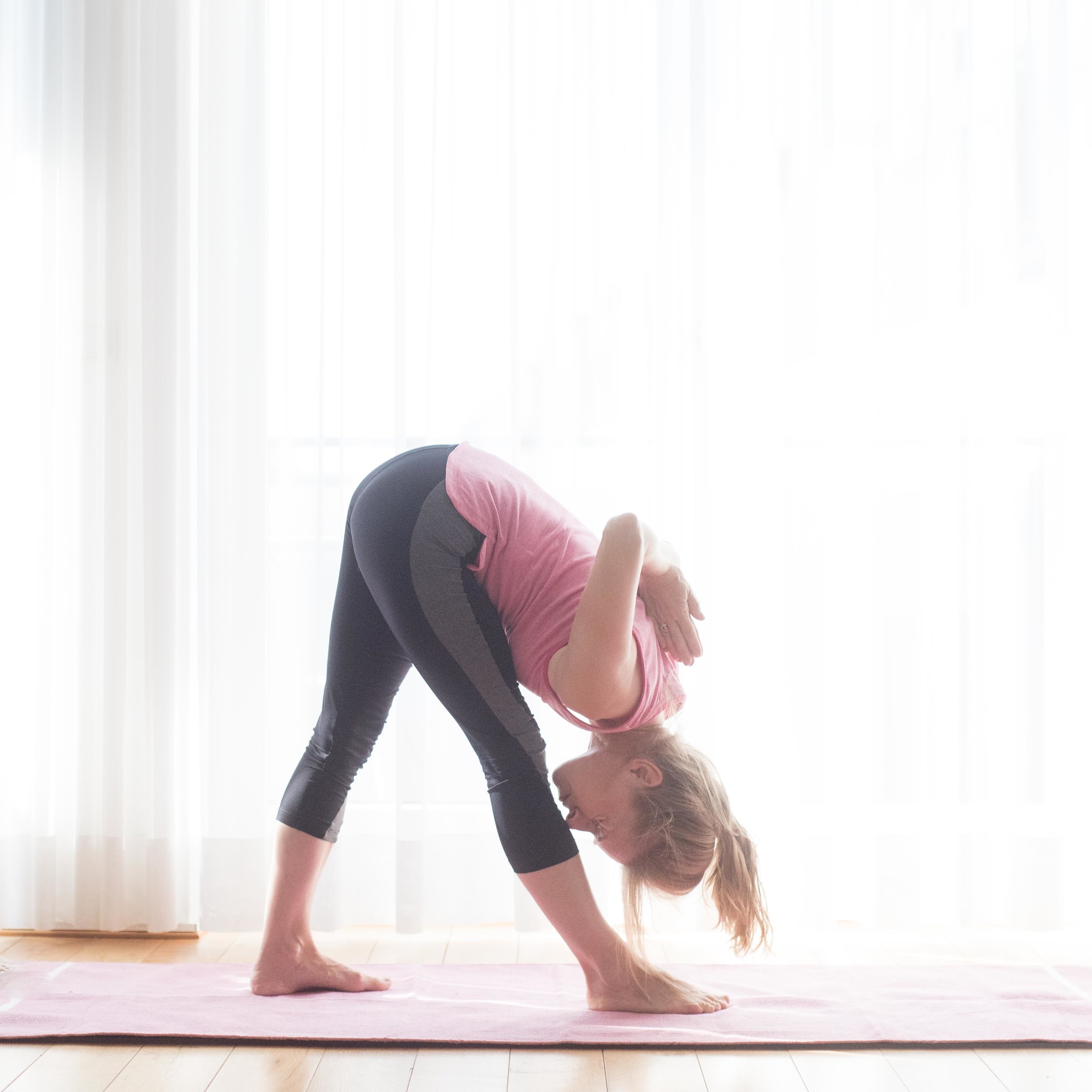Utthita parsvottanasana, July 2022
Picture:
Utthita parsvottanasana is a forward bending asana and like all standing asanas it’s also a balancing asana. Balancing might be easy when performing this pose, yet to keep the hips parallel and to touch the leg with the chin might take some time.
I add a back bending part. Back bending got neglected over years. We have so many more opporunties to bend forward in life so that I’ve the feeling that I'd like to balance this with extra back bending exercises. The first Ashtanga yoga series focuses almost only on forward bending asanas. Now back bending is the movement in my mind.
It’s not a deep back bending, rather a warm up. The body gets used to bend backwards.
Goal no 1:
Goal no 1 is the only goal that I currently have regarding my yoga practice. It’s to ramp up the frequency of my practice. I remember myself daily that this is my focus nothing else. I record my practices in a habit app. Yesterday I realised that not all practices were recorded. I don’t care. I know that I had too many breaks during the last year. .
During the last 2 decades I had periods with almost no breaks. This was always when I could go to yoga classes. It felt as if I went to work. For many reasons (lock-down, injuries) I practice mainly at home these days. More disciplined is required. The huge advantage at home is that I can adjust my practice to my personal needs. I can add strength exercises. I can use a timer and I can hold positions longer than I usually do in a yoga class. Holding positions longer is a game changer. I add useful exercises and so on.
So today, my goal no 1 in mind, I practiced. I realised that I pulled muscles around the hip flexor slightly. That meant that I had to practice with care. I avoided stretching this area. Otherwise it was an average practice. It counts as a practice.
Often we can hear by an aspiring student of whatever: I practiced on and off. The first step is to ask oneself if the topic is really that interesting that a student wants to spend time to learn it. If yes, what was the reason to stop learning. Daily basis exercises are the foundation of everything one wants to learn. Often it’s stated: I don’t have enough time. My solution: No TV. I don’t miss it. Be creative and find time. Think of your topic as If it is your next love affair.
Tomorrow is the last practice of this week. Primary is on the schedule. Due to my pulled leg I’ll practice at home.


